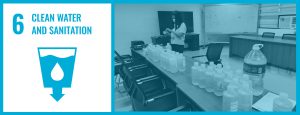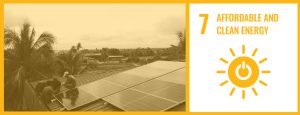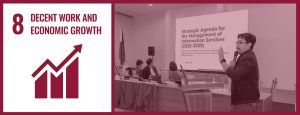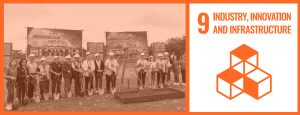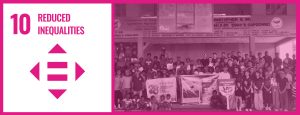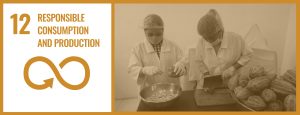2024 Research | SDG 7 – Affordable and Clean Energy
Research Programs
Solar-Powered Automobile Air-con System
Proponents: ROMEL B. CRISTOBAL, RICHARD P. ESCALANTE, OSCAR G. BANGAYAN, JOEMARIE V. JOVELLAR
Abstract
The Solar-Powered Automobile Air-con System (SPAAS) was created as a replacement for the original design of the Automobile Air-con System. The SPAAS was installed on an old coaster (minibus) with four units of 330-watt monocrystalline photovoltaic (PV) panels mounted on its roof. Additionally, a 3-kilowatt inverter, a 40-ampere solar charge controller, two units of 250 ampere-hours by 12-volt gel-type deep cycle batteries, and a 1-hp split-type air conditioner were also installed inside the coaster to complete the system. This study also addresses the growing need in the transportation sector for green and energy-efficient solutions. The technique lowers carbon emissions and eliminates the need for conventional fossil fuels by using solar radiation, which is abundant and free, to power a refrigeration cycle. To ensure effective energy conversion and storage, the suggested design combines photovoltaic panels, a battery storage system, and an optimized air-con system unit. The system’s performance qualities, energy efficiency, and economic viability are examined in this article as it investigates the system’s technological feasibility. Additionally, it talks about the possible advantages for the environment and difficulties that come with the widespread use of Solar-Powered Automobile Air-con Systems.
Development of Upgradable Solar-Hybrid Technologies for Disaster Response, Climate Change Adaptation and Mitigation
Proponents: Franklin A. Samonte, Warlito D. Antonio, Restituto C. Miguel
Abstract
This study evaluates the viability of a hybrid-powered irrigation system that integrates a monocrystalline photovoltaic (PV) module and local electric utility to supply a submersible pump for agricultural applications. The performance characteristics of the PV module, considering its maximum power output and optimal operating voltage, demonstrate its capability to efficiently harness solar energy. The submersible pump, rated at 1 HP, effectively supports irrigation needs with a maximum flow rate of 0.32 m3/min and a maximum head of 15 meters. However, financial analyses reveal significant challenges. The break-even analysis indicates a recovery period of approximately 11.9 years, suggesting considerable investment risk. Additionally, the negative Net Present Value (NPV) over 15 and 20 years highlights that projected costs exceed expected benefits, interpreting the project as financially unviable. The Benefit-Cost (B/C) ratio of less than 1 emphasizes that the costs outweigh the benefits, yielding only 0.53 to 0.59 PHP for every peso spent. This study concludes that while the hybrid system offers technical advantages, the current financial framework necessitates reassessment and strategic adjustments to enhance economic sustainability and encourage adoption among farmers. Recommendations include exploring financial incentives, optimizing operational efficiencies, and investing in farmer education.
Empowering Communities: Design,Fabrication, and Evaluation of Mobile Solar-Powered Charging Stations with Integrated Street Lighting and Automated Water Refilling Station for Disaster Resilience
Proponents: Jolan Baccay Sy, Jake La Madrid, Allen M. Paz
Abstract
This study investigates the design, fabrication, and evaluation of mobile solar-powered charging stations integrated with street lighting and automated water refilling systems, aimed at enhancing disaster resilience in rural communities, particularly at the Cabagan Riverside Evacuation Center. The primary objectives were to address energy and water accessibility challenges during natural disasters, develop functional designs for diverse community needs, and utilize sustainable materials for durability.
The innovative approach combines solar-powered charging, street lighting, and automated water refilling into a single mobile unit. Engineered to provide essential energy, lighting, and water access for one week in disaster-affected areas, the station features a lightweight frame, high-efficiency solar panels (330 watts), and a 100Ah battery. Multiple USB ports facilitate device charging, while integrated LED lighting enhances nighttime safety. The automated water refilling system employs ultrasonic sensors and an Arduino microcontroller for efficient water dispensing. Evaluation through a structured questionnaire revealed significant improvements in energy access and safety, with high satisfaction among community members. This study underscores the potential of solar-powered solutions to strengthen disaster resilience and promote sustainability in vulnerable regions, offering valuable insights for policymakers and practitioners in disaster management.
Development of an Automated Solar (Autosolar)Powered Biowaste Processing Machine
Proponents: Michelle Ann M. Calubaquib,Ph.D., Engr. Jolan B. Sy, Engr. Jake D. La Madrid, Engr. Samuel R. Simon, Ambrose Hans G. Aggabao, Ph.D.
Abstract
This research focused on the design, optimization, and integration of a biowaste processing machine, or biodigester, and a 16 kW solar photovoltaic (PV) system to create a sustainable and efficient solution for converting agroforestry waste into compost. The biodigester operates through aerobic decomposition, utilizing a control system that monitors and regulates temperature, humidity, and soil moisture to ensure efficient compost production. This system includes sensors, a microcontroller, and a Human-Machine Interface (HMI) for real-time monitoring and control. The mobile 16 kW solar PV system, comprising 18 high-efficiency monocrystalline panels, converts sunlight into electricity, which is then optimized and stored using a Deye inverter and a high-capacity lithium battery managed by a Battery Management System (BMS) and active balancer. The successful integration of the biodigester and solar PV system resulted in a mobile biowaste processing unit capable of converting agroforestry wastes into organic fertilizers. The system’s mobility, flexibility, and reliance on solar energy ensured efficient and sustainable operation. Key findings included the production of compost with significant nutrient content (1.68% nitrogen, 0.14% phosphorus, 2.16% potassium, pH 7.12) when using a compost activator, maturing in 20 days. Compost without the activator had higher nitrogen and phosphorus but lower potassium content, maturing in 25 days. This study highlights the benefits of integrating renewable energy with biowaste processing technologies,
promoting sustainable agricultural practices and reducing environmental impact.






